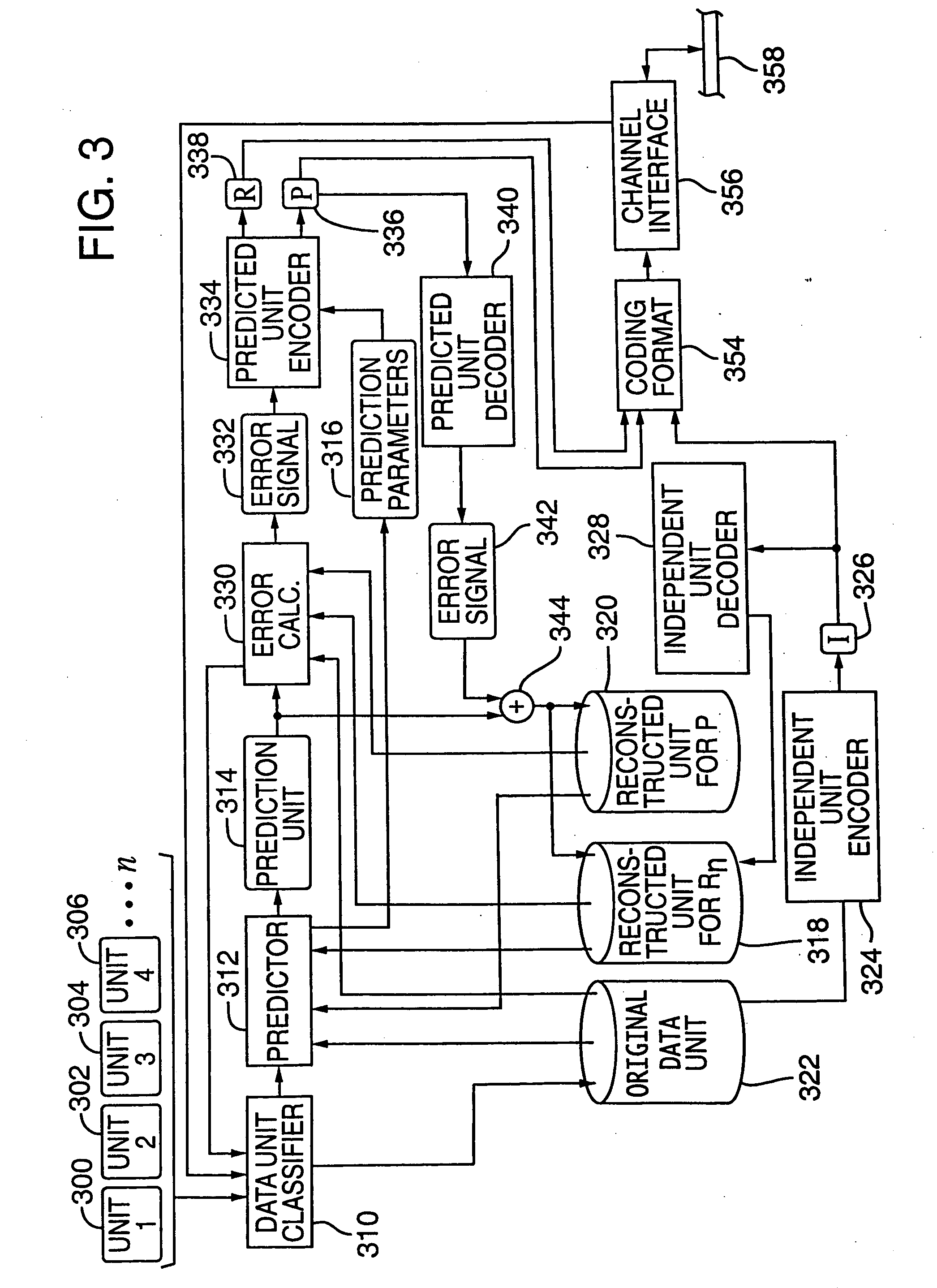Media coding for loss recovery with remotely predicted data units
a technology of loss recovery and data units, applied in the field of media coding for loss recovery with remotely predicted data units, can solve the problems of limiting the quality of streaming media playback, affecting the playback quality of content, and losing data units that not only lose their own data, but also render useless all subsequent data units, etc., to improve loss recovery, improve loss recovery, and enhance loss recovery
- Summary
- Abstract
- Description
- Claims
- Application Information
AI Technical Summary
Benefits of technology
Problems solved by technology
Method used
Image
Examples
Embodiment Construction
Introduction
[0024] The following sections provide a detailed description of a multimedia coding scheme that uses a remotely predicted data unit to enhance loss recovery. The first section begins with an overview of an encoder and decoder implementation. The next section then provides further detail regarding an implementation of the encoder and decoder for video coding applications. Subsequent sections describe methods for classifying the type of data units in an encoded bit stream and prioritizing the transfer of encoded units based on the data unit type.
[0025] To illustrate the concept of a remotely predicted data unit, it is helpful to consider a dependency graph of an encoded data stream that uses remotely predicted units. FIG. 2 is a diagram illustrating an example of a dependency graph of a data stream with remotely predicted units. For ease of comparison, it uses the same notation as used for the dependency graph shown in FIG. 1. The coding scheme shown in FIG. 1 places th...
PUM
 Login to View More
Login to View More Abstract
Description
Claims
Application Information
 Login to View More
Login to View More - R&D
- Intellectual Property
- Life Sciences
- Materials
- Tech Scout
- Unparalleled Data Quality
- Higher Quality Content
- 60% Fewer Hallucinations
Browse by: Latest US Patents, China's latest patents, Technical Efficacy Thesaurus, Application Domain, Technology Topic, Popular Technical Reports.
© 2025 PatSnap. All rights reserved.Legal|Privacy policy|Modern Slavery Act Transparency Statement|Sitemap|About US| Contact US: help@patsnap.com



